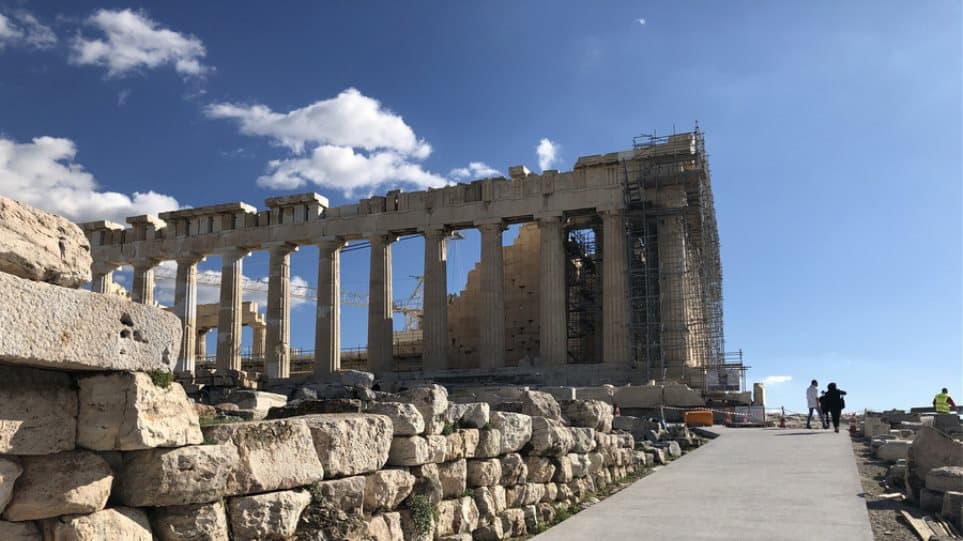
Work is underway to create a path for wheelchair users, elderly citizens and others with mobility problems to see the Acropolis in Athens up close.
The project is funded by the Onassis Foundation, which also donated the improved Acropolis illuminations.
However, the cement on the archaeological site, stirred reactions on social media. In response, the Ministry of Culture and Sports stated "improving the attendance of monuments at the Holy Rock of the Acropolis is a priority for the Ministry of Culture and Sports. With the upgrade projects of the services provided on the Acropolis, the Sacred Rock becomes - for the first time - completely accessible not only to the disabled, but also to citizens with mobility or other health problems. When completed and delivered on December 3, 2020, together with the new, safe state-of-the-art slope lift, the experience of visiting the Acropolis will be completely different."
“Visitors will be greeted by smooth, durable and stable surfaces, ensuring smooth and safe movement, while wheelchairs will be able to move freely and not linearly. This is how the free space in antiquity will be perceived. Today’s visitor perceives the whole [site], as an uneven and inaccessible square with marble architectural masterpieces which are strangely artless and cheap in the lower parts with often obvious symptoms of galloping worn out.”
On her part, Greece's Minister of Culture and Sports Lina Mendoni said: "As I have stated many times, the image of the Acropolis is the image of the country. We completed the lighting and received only praise. In the next few days, the slope lift will be completed, a completely modern project, a model in its category at the international level. The work of paving the routes is now being carried out. Some people talk about 'cement'. Let them consider, let them see, let them ask for information what material we use. It is an architectural concrete, the cement content of which is only 12%. A durable material is necessary, first, to facilitate the movement of wheelchairs. Secondly, because the restoration works on the Acropolis continue to be carried out."
Interesting facts about the Acropolis
- The term “Acropolis” comes from the Greek words “akron” (which means the “highest point or extremity” and “polis” (which means “city”). Acropolis can be taken to mean “High City”, “City on the Extremity”, or “City on the Air”.
- The Parthenon is often called “the world’s most perfect building.” Architectural tricks like a slight angling of the temple pedestal correct the optical impression that the building sags in the middle, and barrel-like curves on the columns counteract the illusion that they narrow in the middle. So in a way, one might say the Parthenon’s perfection is only achieved through a series of deliberate imperfections.
- The Greek flag flying on the Acropolis has special historic significance. In 1941, two young men pulled down the swastika flag flying there during the Nazi occupation, leaving it empty. Incredibly, they’d reached the Acropolis using ancient passages they’d learned about in Greek history books. It was a powerful act of defiance that set the tone for the fierce Greek Resistance movement. Today, you can see the Greek Presidential Guard, the Evzones, perform a flag-raising and flag-lowering at dawn and dusk on Sundays.
- The Acropolis is one of the earliest known settlements in Greece. Built sometime around the fourth millennium, the Acropolis was an ancient city that still retains much of its original Classical architecture and temples, including the Parthenon. The Parthenon was built between 447 and 432 BC as a sacred temple for the goddess Athena, and it’s a true marvel to behold. The entire complex of statues, temples, pillars, and structures is stunning.
